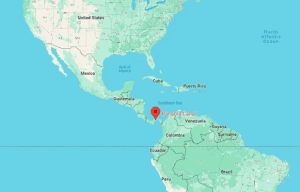APPOINTMENT OF SIXTEENTH FINANCE COMMISSION
TAG: GS 2: POLITY
THE CONTEXT: The Finance Ministry confirmed the appointment of Arvind Panagariya, former Niti Aayog vice chairman and Columbia University professor, as the Chairman of the Sixteenth Finance Commission.
EXPLANATION:
- Arvind Panagariya, a renowned trade economist, previously held the position of the first vice chairman of Niti Aayog from 2015 to 2017.
- His expertise and experience in both academia and policymaking mark him as a fitting choice for this significant role.
- This crucial Constitutional body is tasked with recommending the tax revenue sharing formula between the Centre and States for the upcoming five-year period starting April 2026.
- The Sixteenth Finance Commission’s scope extends beyond determining the tax-sharing formula.
- It includes a review of current funding mechanisms for Disaster Management initiatives and proposing strategies to enhance States’ consolidated funds, aiming to augment resources available for Panchayats and Municipalities.
- The Cabinet had approved the terms of reference for the Sixteenth Finance Commission on November 29, emphasizing its importance in determining the tax-sharing framework between the Central and State governments.
Tenure and Deadline for Commission’s Recommendations:
- The Chairman and other Commission members will hold office until the submission of the report or October 31, 2025, whichever occurs first.
- The Commission is mandated to submit its recommendations by October 2025, enabling their integration into the Budget process for 2026-27.
- The Fifteenth Finance Commission, chaired by NK Singh, was constituted in November 2017.
- Its terms of reference were later modified, extending its tenure to six years by late 2019.
- This extension required the panel to deliver two reports, one for 2020-21 and a final report spanning 2021-22 to 2025-26.
Finance Commission:
- The Finance Commission is constituted by the President under Article 280 of the Constitution.
- As per the provisions contained in the Finance Commission [Miscellaneous Provisions] Act, 1951 and The Finance Commission (Salaries & Allowances) Rules, 1951, the Chairman of the Commission is selected from among persons who have had experience in public affairs, and the four other members are selected from among persons who–
(a) are, or have been, or are qualified to be appointed as Judges of a High Court; or
(b) have special knowledge of the finances and accounts of Government; or
(c) have had wide experience in financial matters and in administration; or
(d) have special knowledge of economics
- It is the duty of the Commission to make recommendations to the President as to—
- the distribution between the Union and the States of the net proceeds of taxes which are to be, or may be, divided between them and the allocation between the States of the respective shares of such proceeds;
- the principles which should govern the grants-in-aid of the revenues of the States out of the Consolidated Fund of India;
- the measures needed to augment the Consolidated Fund of a State to supplement the resources of the Panchayats in the State on the basis of the recommendations made by the Finance Commission of the State;
- the measures needed to augment the Consolidated Fund of a State to supplement the resources of the Municipalities in the State on the basis of the recommendations made by the Finance Commission of the State;
- any other matter referred to the Commission by the President in the interests of sound finance.
Conclusion:
- Arvind Panagariya’s appointment as the Chairman of the Sixteenth Finance Commission heralds a critical phase in India’s fiscal policy planning. His expertise, coupled with the Commission’s wide-ranging mandate, underscores the significance of tax revenue sharing and strategic financial measures in fostering effective governance and resource allocation across Central and State jurisdictions.
- The Finance Commission’s role as an independent and authoritative body in shaping India’s fiscal policies continues to evolve, adapting to the dynamic socio-economic landscape of the country.



